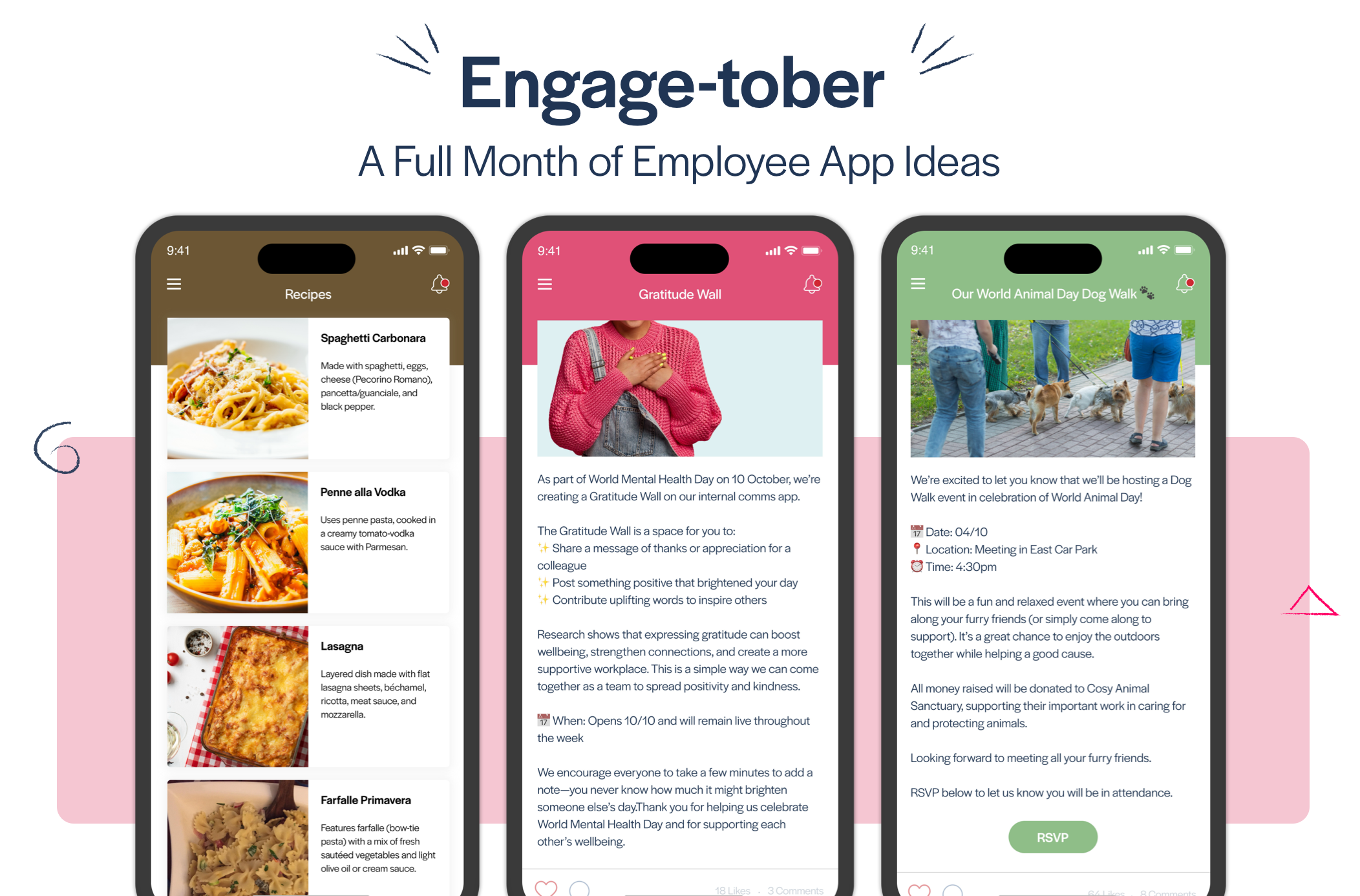
Blog
Overcoming Communication Challenges in the NHS
Learn how a mobile app can help you overcome your most pressing challenges and enhance your current strategy for communications and engagement.

In charge of internal communications at your NHS trust? Learn how a mobile app can help you overcome your most pressing challenges and enhance your current strategy for communications and engagement.
Scratching your head over how to communicate effectively with your NHS trust employees? No matter what portion your trust represents of the 1.3 million total NHS workforce or where you are in the UK, internal communications to a spread-out, spread-thin team is full of challenges.
The annual NHS staff survey results from 2018 found low scores on topics relating to internal communication. One standout stat: Only 40.3% of staff agree that communication between senior management and employees is effective.
We know that there’s great power in healthy internal communication and its ability to positively influence organisational culture and employee satisfaction and performance. And even though at its heart, the NHS is an organisation that relies on face-to-face interaction, internal communications teams can and should take advantage of technology tools designed to reach hard-to-reach employees.
Here are four challenges that can be met using technology-driven solutions, specifically an employee communications mobile app.
Challenge #1: You need to communicate with and engage employees you can’t see or meet with face-to-face.
Your trust’s employees are spread out geographically and likely spread thin as well as working various shift patterns. They probably don’t have access to a computer at work and may not even have email. What do they have? Smartphones.
Smartphones have become the preferred way to get information and communicate for the vast majority of working adults. In fact, Statista data indicate that 96% of adults in the UK have a mobile. These smartphone users expect communication that is rapid-fire, with options to react or express an opinion.
Employee communications strategies that aim to leverage this digital landscape at every curve and meet users where they are (or exceed users’ expectations) are the ones that will succeed. Mobile apps for communicating with staff can play a key role in this strategic direction because they offer a technology-first, nimble way to publish organisational news, CEO blogs, and even target information to specific teams, shifts or locations.
But employee apps aren’t just about your communications team publishing content in a different package. An app functions as a two-way communication tool, giving users the freedom to like content or post comments, publish their own, and provide peer-to-peer recognition.
Making this shift to internal communication that’s more conversational has the potential to lift that all-to-often elusive engagement.
Challenge #2: Your internal comms team is shrinking due to budget constraints.
Funding is limited, and just like other departments or teams, your communications team is short-staffed and overworked; however, the expectation is one of few limits in terms of what you can accomplish.
The right employee communications tools are cost-effective and help hardworking teams work smarter — not harder. Employee communications apps allow you to leverage content management systems (CMS) that are built with your team in mind, meaning they are built to be intuitive and highly efficient. In other words, you won’t need to lean on someone with technical expertise to publish great-looking content.
Staff and stakeholders can also be given access to collaborate on and generate their own content within the app — a nice content multiplier that doesn’t rely entirely on you and your team to publish.
Plus, with the right app partner, you can also get help with your internal communications strategy. One of the things we love to do at Thrive is advise our clients on internal communications best practices and help them develop the strategy that’s right for them.
Challenge #3: You’ve got to communicate change and cultivate trust in the middle of it.
The current economic standing means that change is unavoidable. The right communications with your NHS trust employees can make a big difference in supporting staff through the challenges of change and minimising the disruption they feel.
Employee communications apps are not just for publishing one-sided updates and news. While a primary use for the apps is to communicate urgent announcements that won’t be missed, these tools also succeed in providing the sought-after resources employees look to for guidance during times of change.
Two standout features are the FAQs section and a list of important contacts. Both can be updated in real-time in the app.
In addition, an app can be used to quickly and easily gather feedback from employees, so that they feel involved during times of change. The 2018 NHS Staff Survey reports that, on average, only 51.9% of respondents had the opportunity to weigh in on changes that affect their work. Having a forum to provide insights can go a long way in promoting trust amongst employees as they navigate change.
This was the case for Fairchild Medical Center in Yreka, California. Their executive team had big ideas for change, but saw low buy-in and high turnover, in part because they didn’t solicit the opinions of their employees. After implementing an app to better communicate changes and gather feedback, they experienced a marked lift in morale.
Challenge #4: You’re charged with demonstrating value for your work — and ROI on the tools you use.
It can be tough to demonstrate the strategic value and impact on the bottom line for something as abstract as internal communications. Employee communications solutions that come stocked with reporting and analytics tools can provide a basis — and hard numbers — to stand on.
With an app, you can have more granular visibility into the effectiveness of your communications than email or printed newsletters. See what types of content your team members are clicking and commenting on. Have a better gauge of engagement by looking at the user-generated content and peer recognition features, and more.
Data like these are what stakeholders need to ascertain the value of any tool in the communicators tool box, and they have the added value of helping to further guide your strategy and content in the right direction.
Next steps…
Ready to refine your strategic approach to communications within your trust and learn how you can demonstrate value for stakeholders? You’re in the right place. Reach out to let us know about some of the specific challenges you’re facing. We’d love to help.









